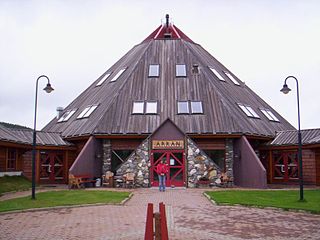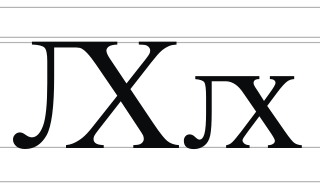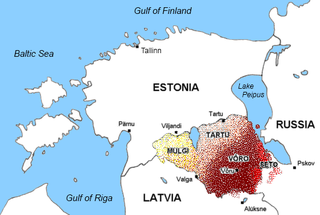 W
WÁrran is the Lule Sámi center in the village of Drag in Hamarøy Municipality in Nordland county, Norway. The center was established in 1994 to foster and promote the Lule Sámi language and culture. It does this by arranging on-site and video conference courses in Lule Sámi, publishing books, and doing research. The center has a museum, a souvenir shop, and a Lule Sámi day-care center on its premises. One of the major projects that it was involved with was the Lule Sámi on-line course Sámasta and soon it will be publishing a Norwegian–Lule Sámi dictionary.
 W
WThe first northern Estonian language version of the New Testament was published in 1715, with the whole Bible of Anton thor Helle appearing in Estonian in 1739.
 W
WIngrian, also called Izhorian, is a nearly extinct Finnic language spoken by the Izhorians of Ingria. It has approximately 142 native speakers left, most of whom are aged. It should not be confused with the Southeastern dialects of the Finnish language that became the majority language of Ingria in the 17th century with the influx of Lutheran Finnish immigrants. The immigration of Lutheran Finns was promoted by Swedish authorities, who gained the area in 1617 from Russia, as the local population was Orthodox. Nowadays, in total the language has 360 - 500 speakers.
 W
WThe Institute for the Languages of Finland is a governmental linguistic research institute of Finland geared at studies of Finnish, Swedish, the Sami languages, Romani language, and the Finnish Sign Language.
 W
WKomi De is a letter of the Molodtsov alphabet, a version of Cyrillic. It was used only in the writing of the Komi language in the 1920s and in the Mordvin language. The lowercase form resembles the lowercase of the Latin letter D and its uppercase form resembles an upside-down capital Latin letter P or a reversed soft sign.
 W
WKomi Dje is a letter of the Molodtsov alphabet, a variant of Cyrillic. It was used only in the writing of the Komi language in the 1920s and in the Mordvin language.
 W
WKomi Dzje is a letter of the Molodtsov alphabet, a variant of Cyrillic. It was used in the writing of the Komi language in the 1920s, as well as in the Cyrillization of Arabic to represent the sound []. It is derived from the Cyrillic letter З.
 W
WKomi Lje is a letter of the Molodtsov alphabet, a variant of Cyrillic. It was used only in the writing of the Komi language. It is equivalent to the Cyrillic letter Lje (Љ љ). Some of its forms are similar to the Chinese character 几.
 W
WKomi Nje is a letter of the Molodtsov alphabet, a variant of Cyrillic. It was used only in the writing of the Komi language in the 1920s and in the Mordvin language. Its form is similar to the Latin letter Hwair (Ƕ ƕ), but the lowercase form is a small version of the capital letter. Komi Nje represents the palatal nasal, somewhat like the pronunciation of ⟨ni⟩ in "onion". It corresponds to the Cyrillic letter Nje (Њ њ), and to the Latin digraph NJ (NJ Nj nj) used in the Croatian and Serbian languages.
 W
WKomi Sje is a letter of the Molodtsov alphabet, a version of the Cyrillic alphabet that was used to write the Komi language in the 1920s. It represented the voiceless alveolo-palatal sibilant. Some of its forms are similar to the Latin letter G.
 W
WKomi Tje is a letter of the Molodtsov alphabet, a variant of Cyrillic. It was used only in the writing of the Komi language in the 1920s.
 W
WKomi Zje is a letter of the Molodtsov alphabet, a version of Cyrillic. It was used only in the writing of the Komi language in the 1920s and in the Mordvin language.
 W
WLha is a letter of the Cyrillic script. It looks like a cross-digraph of the Cyrillic letters El (Л л) and Kha (Х х); Л and Х.
 W
WLivvi-Karelian is a dialect of the Karelian language, which is a Finnic language of the Uralic family, spoken by Olonets Karelians, traditionally inhabiting the area between Ladoga and Onega lakes, northward of Svir River. The name "Olonets Karelians" is derived from the territory inhabited, Olonets Krai, named after the town of Olonets, named after the Olonka River.
 W
WRauma dialect is a dialect of Finnish spoken in the town of Rauma, Finland.
 W
WSeto is a dialect of South Estonian or a separate language spoken by 12,549 people. It is sometimes identified as a dialect of Võro, or the two are described as one language, Seto-Võro. Setos (setokõsõq) mostly inhabit the area near Estonia's southeastern border with Russia in Setomaa, and are primarily Eastern Orthodox, while Võros (võrokõsõq) are traditionally Lutherans and live in historical Võru County.